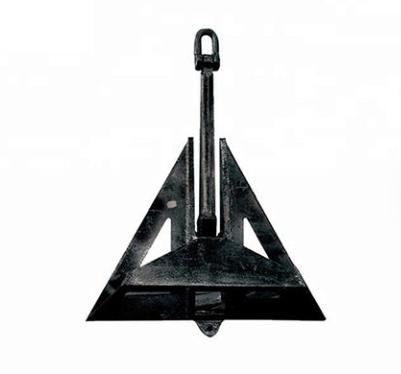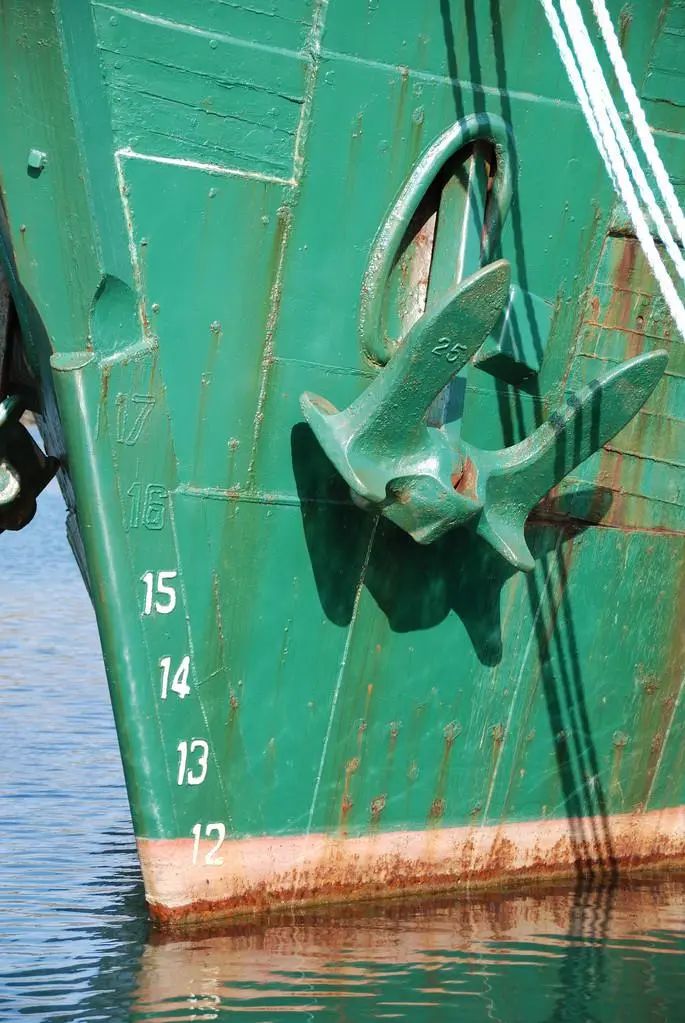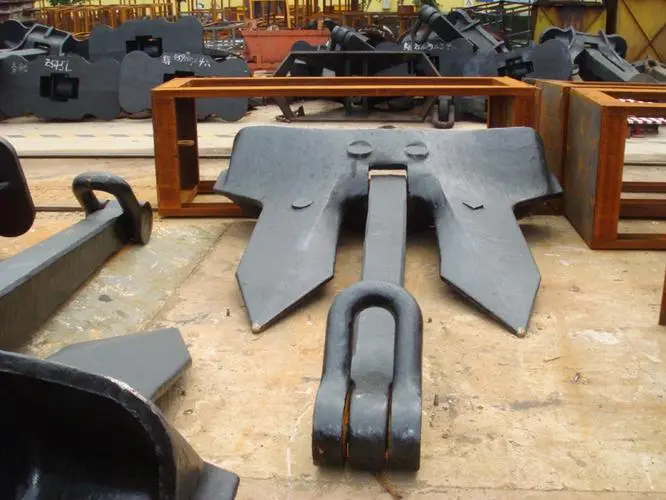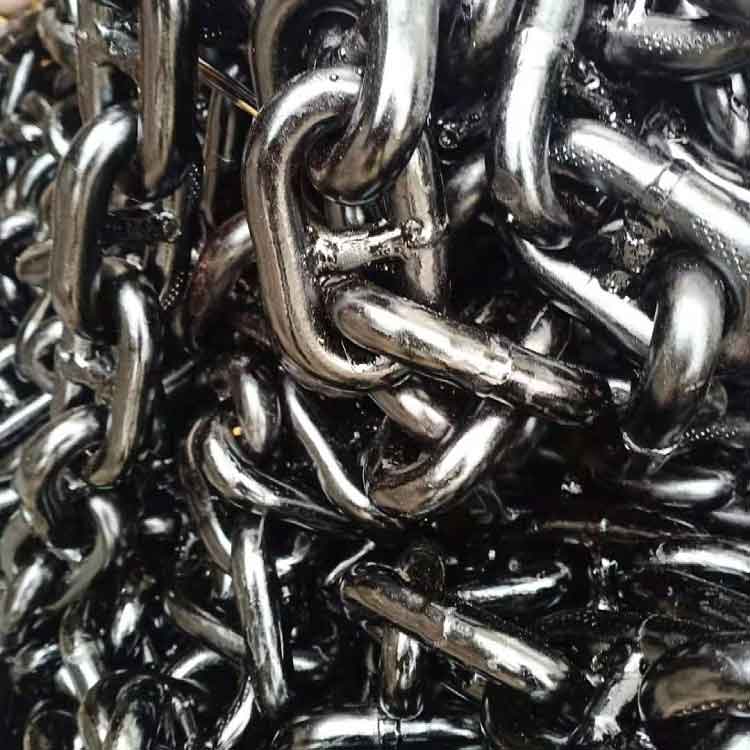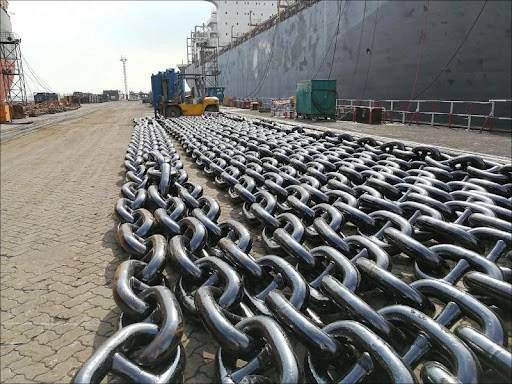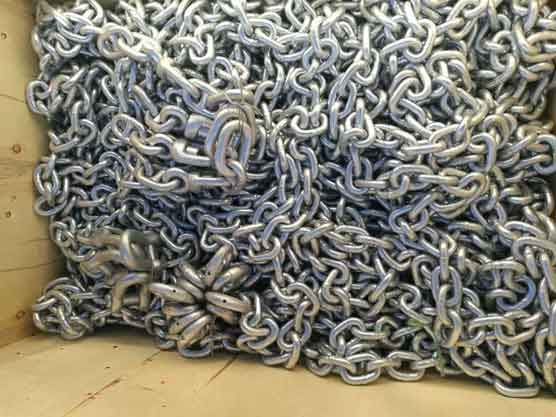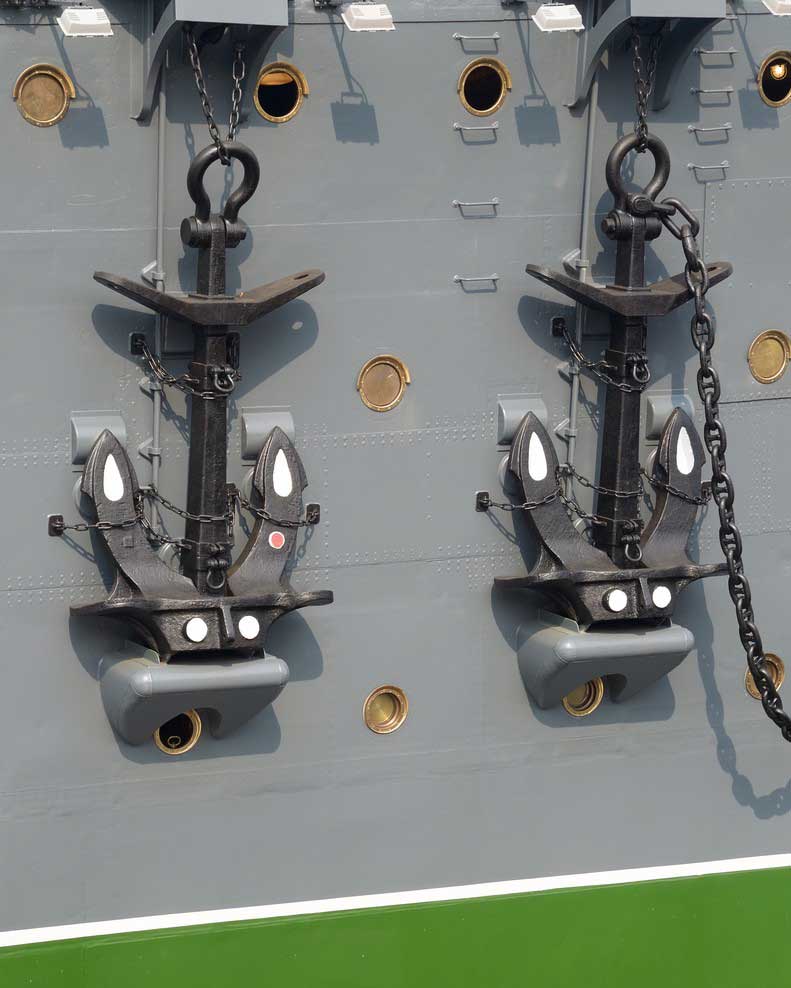What is marine anchor?
Marine anchor is a special device that has a specific shape, and it can quickly bite into the subsoil after being thrown into the water to provide grip. Through the anchor chain or cable attached to its top, the ship or other floating system is reserved in the predetermined water area. Marine anchor is one of the main parts of the anchor equipment that produces the holding force. The anchor has a special shape and is usually made of forged steel or cast steel. It is composed of anchor body and anchor crossbar. And the anchor body is composed of anchor ring (or anchor shackle), anchor stem (anchor handle), anchor crown, anchor arm, and anchor claw.
Bow anchors commonly used on merchant ships are all stockless anchors, while stern anchors are sometimes used with rod anchors or dovetail anchors.
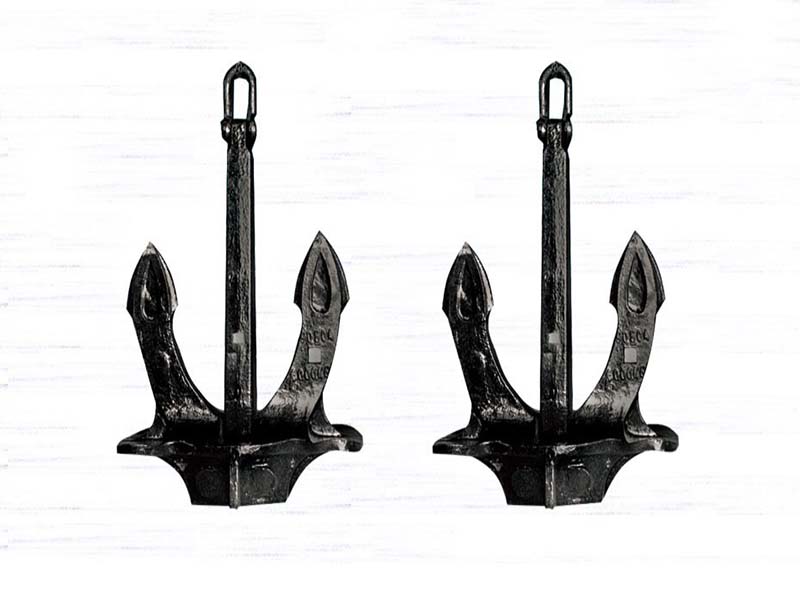
1. Basic requirements for marine anchors
The marine anchor is the main device for mooring a ship, and its performance directly affects whether the ship can be moored reliably, so high requirements are put forward for its performance.
(1) Strong grip
This is the most basic performance requirement. The characteristic value that measures the gripping performance of a ship’s anchor is usually called the grip coefficient. The holding force coefficient of an anchor is equal to the holding force produced by the anchor in the subsoil divided by the mass of the anchor in the air. According to common sense, the greater the mass of the anchor, the greater the holding power. However, as the mass of most anchors increases, the holding power coefficient tends to decrease. Therefore, this feature should be fully paid attention to when determining the anchor holding power.
(2) Can adapt to a variety of different substrates
Due to the vast sailing area of general ships, the bottom quality changes greatly, so the anchor type required to be equipped can adapt to a variety of bottom qualities.
(3) Robust structure
Ships may bear various complex loads during the process of anchoring and mooring. Therefore, the structure of the anchor should be strong to ensure its safe use.
(4) Good stability, easy to enter the soil
During the anchoring process of the ship, due to the change in wind direction and flow direction, the ship turns around the anchor point. The uneven bottom quality causes uneven force on the anchor claws, which causes the anchor to turn over and be pulled out of the bottom soil. Therefore, the anchor has good stability. It is very important. Usually, anchors with crossbars have better stability, but it will make the storage of anchors inconvenient. In some cases, such as the ship turning or the load suddenly increasing, the anchor may still be pulled out of the subsoil, so the anchor is required to have the characteristic of biting into the subsoil again.
(5) Short distance into soil
After the anchor is thrown into the water, the anchor claws gradually bite into the subsoil under the influence of the anchor cable, and the distance from the beginning to when all bites into the subsoil to exert the maximum grip is as short as possible.
(6) Small anchor pulling force
When lifting the anchor, the smaller the force to pull the anchor out of the subsoil, the better, which helps to reduce the burden on the windlass.
(7) Good self-cleaning
When the anchor is lifted away from the subsoil, it should not carry a lot of soil, otherwise it will increase the burden of the windlass. At the same time, when the anchor is stowed in the water, the soil should be basically removed.
(8) Convenient collection
Generally, the anchor is stored in the chain cylinder, and usually the rodless claw anchor is easier to be received into the chain cylinder, and the rod anchor and the fixed claw anchor are stored on the anchor frame.
2. Types of marine anchors
There are many types of marine anchors:
- According to their structure and shape, they are divided into: stocked anchor, stockless anchor, high holding power anchor and special-purpose single-claw anchor, double-claw anchor, multi-claw anchor, fungus anchor, floating anchor, etc.
- According to the weight and function, it is divided into: main anchor, middle anchor and small anchor.
- According to the set position and purpose, it is divided into: side anchor, stern anchor, spare anchor, moving anchor, positioning anchor, retreating anchor and deep-sea anchor, etc.
- It can be roughly divided into four types: stocked anchor, stockless anchor, high holding power anchor and special type anchor. There are more than ten types of anchors.
(1) Stocked Anchor
The anchor with a crossbar is stocked anchor. The characteristic of this type of anchor is that anchor claw bites into the soil. When the anchor is dragged on the seabed, the crossbar can prevent the anchor claw from tipping over and play a stabilizing effect. There are navy anchors, single-claw anchors and Japanese anchors among stocked anchors. Among them, navy anchors are typical rod anchors with the longest use time, also known as ordinary anchors.
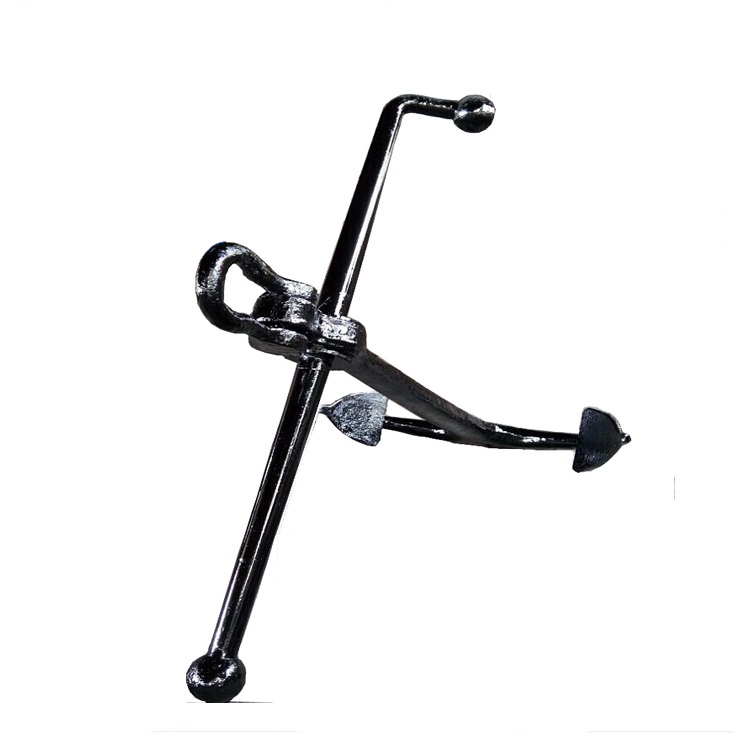
(2) Stockless Anchor
The two-claw anchor without a crossbar and the anchor claw can rotate is stockless anchor. The characteristics of this type of anchor are that the two claws bite into the soil at the same time during work. The stability is good, the adaptability to various soil qualities is strong, and the storage is convenient. Commonly used stockless anchors mainly include Hall anchors, Spek anchors, AC-14 anchors and DA-1 anchors. Among them, the Hall anchor is the object of choice for the main anchor of large and medium-sized ships. AC-14 type anchor is often used as the main anchor of large container ships, automobile carriers and super large oil tankers. It is a commonly used anchor in Europe, America and Japan. The DA-1 anchor is the most stable and most advanced anchor in the world. The Japanese shipbuilding industry considers this anchor to be the most ideal and promising anchor.
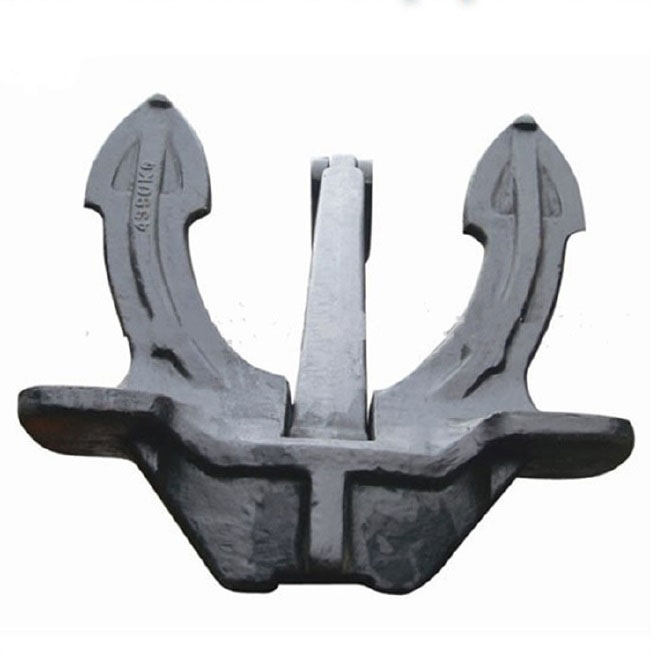
(3) High Holding Power Anchor
The high-holding power anchor is actually a pivoting claw anchor, which has a large grip-to-weight ratio. The high holding power anchors include Pool Anchors, Danforth Anchors, Delta Flipper Anchors, Stevpris Anchors and Stingray Anchors.
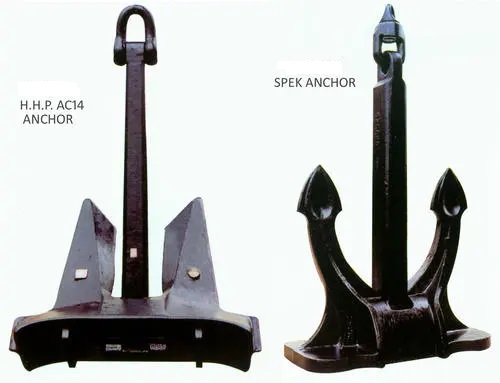
(4) Special Type Anchor
The shape and purpose of special anchors are different from ordinary anchors. Mainly refers to permanent mooring anchors used for pontoons, boat storage, floating docks, etc., ice anchors used on icebreakers and floating anchors used on sailing boats and small boats.
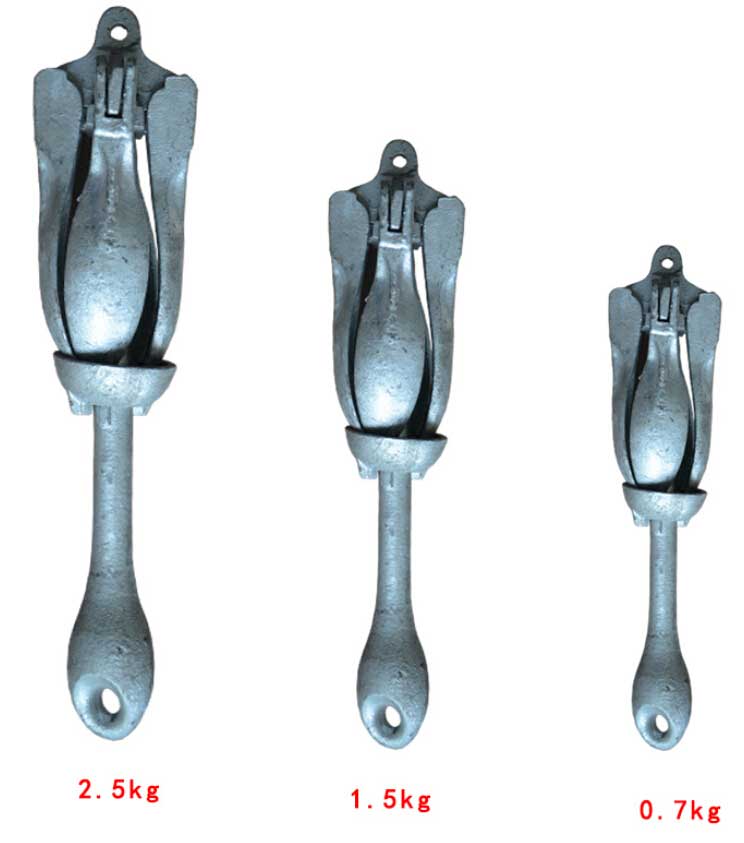
3. Basis For Configuring Marine Anchors
The anchors and anchor chains of marines should be selected according to the type of ship, the waters in which it is sailing. And the number of outfits on the ship according to the data listed in the specification.
The equipment number N, or ship number, is a parameter that reflects the force of wind and current that the hull can receive.
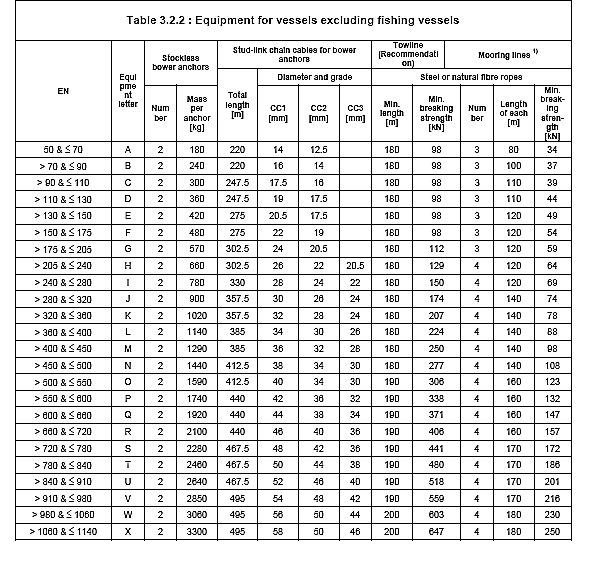
The equipment of cargo ships, bulk carriers, oil tankers, trailing suction dredgers, ferry boats, etc. is selected according to N. From the look-up table of equipment number, the number of anchors that the ship should be equipped with, the weight of each anchor, the grade, total length and diameter of the anchor chain, etc.
Generally, ships of 10,000 tons or more are equipped with 3 main anchors, of which 2 are used as bow anchors and 1 is used as spare anchors. Vessels that often sail in narrow, curved and complicated waterways are also equipped with stem anchors to control the stern swing when necessary.
Summary
Whether you have a large cruiser, a heavy-duty trawler, an aluminum runabout, a kayak or any other type of vessel, you need a suitable marine anchor to ensure the safety of the vessel. Given the many marine anchors available on the market, which one should you choose? It’s hard to answer. This is because of the type of bottom – mud, sand, coral, grass or rock – and the size and wind resistance (wind resistance) of your ship have a bearing on which anchor is best. As China’s leading marine equipment supplier, Boomarine has marine anchors suitable for a variety of navigation conditions. Whether you have any type of ship or water conditions you encounter, we will help you choose the right anchor. Please feel free to contact us.

